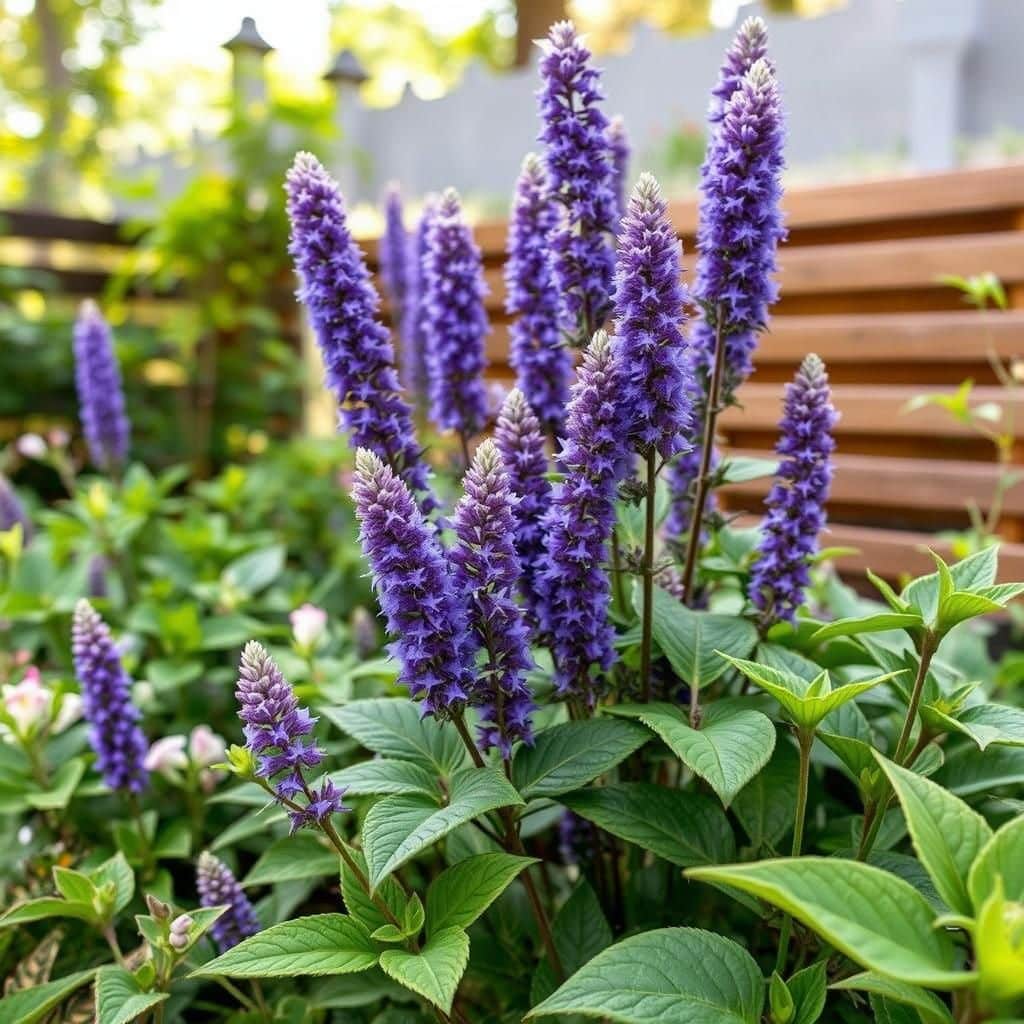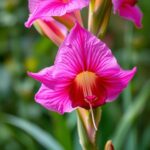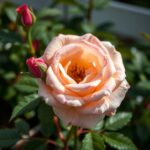Top 10 Outdoor Plants for Shaded Areas: Enhance Your Garden's Appeal

Creating a vibrant garden can be challenging, especially when dealing with shaded areas that receive limited sunlight. However, numerous outdoor plants thrive in low-light conditions, bringing color and life to these often-overlooked spaces. This article explores the top 10 outdoor plants ideal for shaded areas, highlighting their unique characteristics and aesthetic benefits. From lush ferns to striking flowering perennials, these plants not only enhance your garden's appeal but also create a serene and inviting atmosphere. Discover how to transform your shaded spots into lush retreats with carefully selected greenery and blooms that flourish away from direct sunlight.
Best Outdoor Plants for Shaded Areas
For those who have shaded areas in their gardens or outdoor spaces, selecting the right plants can be very rewarding. Many plants thrive in lower light conditions, providing vibrant colors and foliage that enhance the overall aesthetic of the space. Some of the best outdoor plants for shaded areas include ferns, hostas, and shade-tolerant flowering plants like astilbe and hellebore. These plants not only adapt well to low-light environments but also bring a unique charm to shaded spots, making them an essential consideration for landscaping in areas where sunlight is limited.
Choosing the Right Soil for Shaded Plants
Selecting the appropriate soil is critical for the successful growth of outdoor plants in shaded areas. Many shade-loving plants prefer moisture-retentive soil that drains well without becoming waterlogged. Incorporating organic matter like compost can improve soil structure and nutrient content, ensuring that plants such as ferns and hostas receive adequate nourishment. Additionally, it's essential to monitor the soil's pH level, as some shade plants prefer slightly acidic conditions.
Top Shade-Tolerant Plants
There are numerous plants that flourish in shaded environments. Among the most popular are Japanese ferns, coral bells (Heuchera), and hostas, each providing a unique texture and color to your garden. These plants are not only hardy but also require minimal maintenance compared to their sun-loving counterparts. Incorporating these varieties can create a lush, green space even in the dimmest corners of your yard.
Maintenance Tips for Shaded Garden Areas
Maintaining a shaded garden calls for specific care to ensure plants stay healthy and vibrant. Regular watering is crucial since shaded areas can sometimes retain moisture longer than sunny spots, potentially leading to overwatering. Additionally, applying a layer of mulch can help retain moisture and suppress weeds, allowing shade-loving plants to thrive. It is also important to periodically check for pests that could affect plants that are often overlooked due to less obvious light conditions.
Benefits of Planting in Shaded Areas
Utilizing shaded areas in your garden offers numerous benefits. Not only can you maximize the space available, but shaded plants also require less water than sun-dependent ones, making them more sustainable options. Shaded gardens can act as a sanctuary for beneficial insects, such as pollinators, and can create a cooler microclimate in your landscape, making outdoor spaces more enjoyable during hot months.
Creating a Multi-Layered Design
A strategic approach to garden design in shaded areas involves creating a multi-layered effect. By choosing a combination of tall, medium, and short plants, you can enhance depth and interest throughout the area. For instance, placing tall ferns at the back, medium hostas in the middle, and low-growing ground cover species like creeping thyme in the front can create a visually stunning and cohesive design. This technique not only adds beauty but also helps to utilize the space effectively, promoting healthier growth for each species.
| Plant Name | Light Requirement | Water Needs | Height |
|---|---|---|---|
| Hosta | Partial to Full Shade | Moderate | 1-3 ft |
| Astilbe | Partial Shade | Moist | 1-2 ft |
| Ferns | Full Shade | High | 1-4 ft |
| Coral Bells | Partial Shade | Moderate | 1-2 ft |
| Heliobore | Partial Shade | Moderate | 1-2 ft |
What plant is best for full shade?
When considering plants that thrive in full shade, it's essential to choose varieties that can adapt to the low light conditions typically found in shaded areas. Some of the best options include:
1. Hostas: Known for their lush foliage, hostas come in a variety of sizes and colors, which can add vibrant texture to any shaded garden. They are low-maintenance and can thrive in moist, well-drained soil.
2. Ferns: Many fern species are well-suited for shade, providing a delicate and feathery appearance to the landscape. They prefer moist environments and can often tolerate conditions where other plants may struggle.
3. Heuchera (Coral Bells): These plants are celebrated for their stunning foliage and vibrant colors, which can include shades of purple, red, and green. Heucheras offer seasonal interest and can bloom with delicate flowers that attract pollinators.
4. Astilbe: With their fluffy, feathery flower spikes, astilbes are perfect for adding color and texture in shaded areas. They thrive in moist, humus-rich soil and can create a beautiful display in the understory of trees.
See also:
5. English Ivy: This versatile vine can thrive in full shade and is often used for ground cover or to climb walls and other structures. It’s resilient and offers evergreen foliage, dependent on its variety.
Best Perennials for Full Shade
Perennials are an excellent choice for shaded areas as they return each year, becoming more established over time. Some notable perennials include:
- Bleeding Heart: Known for its heart-shaped flowers, this plant thrives in moist, shady spots.
- Pulmonaria (Lungwort): With spotted leaves and spring flowers, pulmonaria is both attractive and hardy in full shade.
- Solomon's Seal: This plant features elegant arching stems and bell-shaped flowers, making it a great addition to shaded gardens.
Best Annuals for Full Shade
While many gardeners prefer perennials, annuals can provide color and variety throughout the growing season. Some excellent annual plants for full shade include:
- Impatiens: Known for their vibrant blooms, impatiens are a classic choice for shady areas and come in multiple colors.
- Begonias: These delightful plants feature both colorful foliage and flowers, adding beauty to shaded spots.
- Fuchsia: Fuchsias bring striking colors and a unique look to shaded hanging baskets or borders.
Ground Cover Plants for Full Shade
Ground covers are practical for shaded areas, suppressing weeds while enhancing the landscape. The following options work well:
- Vinca Minor (Periwinkle): This low-growing plant features lovely purple flowers and lush foliage, ideal for covering ground in shade.
- Pachysandra: Pachysandra is evergreen, providing year-round color, and is highly tolerant of low-light conditions.
- Ajuga (Bugleweed): With its attractive foliage and blue flowers, ajuga can quickly fill in shady areas.
Tips for Growing in Full Shade
To successfully grow plants in full shade, consider the following tips to optimize growth and visual appeal:
- Choose the Right Plants: Always select species known for their ability to thrive in low light.
- Improve Soil Quality: Incorporate organic matter to provide nutrients and better drainage.
- Water Wisely: Plants in shady areas can suffer from both dryness and excess moisture — monitor watering carefully.
Common Mistakes to Avoid in Full Shade Gardening
When gardening in full shade, it's crucial to avoid common pitfalls that can impact plant health:
- Overwatering: Many gardeners mistakenly water too frequently in shady areas. Always check the soil moisture first.
- Ignoring Plant Compatibility: Pairing plants that have vastly different needs can lead to failure; ensure compatibility in growing conditions and care.
- Failure to Prune: Some plants can become overgrown; timely pruning encourages healthy growth and better air circulation.
What can I put in my yard for shaded areas?
:strip_icc()/curved-path-through-full-shade-garden-0c339a6b-d992867929f842b6b5d52006f54355d7.jpg)
Options for Planting in Shaded Areas
Creating a beautiful yard in shaded areas can be a challenge, but there are plenty of plants that thrive in low-light conditions. Consider incorporating a mix of perennials, shrubs, and groundcovers to enhance the overall appearance of your space while also making the most of the shade. Here are some great options to consider:
- Hostas: These are popular perennial plants known for their large, attractive leaves and ability to thrive in various shades.
- Ferns: Various types of ferns, like the Maidenhair or Ostrich fern, can add texture and greenery to shaded spots.
- Astilbe: This perennial boasts feathery flower spikes and can brighten up shady areas with its colorful blooms.
Designing a Shade Garden
When planning your shade garden, consider the layout and how different plants will interact with one another. The design can significantly impact the aesthetics and functionality of your outdoor space.
- Layering: Use taller plants at the back and shorter ones in front to create depth.
- Pathways: Create pathways that allow easy access to different areas while adding structure to the garden.
- Seating Areas: Incorporate benches or chairs under trees for a serene retreat.
Groundcovers for Shaded Areas
Groundcovers are essential for shaded areas as they help prevent weeds while providing a lush appearance. There are numerous options that can thrive and create a beautiful carpet of color and texture.
See also:
- Pachysandra: This evergreen groundcover thrives in shade and requires little maintenance.
- Vinca Minor: Also known as periwinkle, this plant produces lovely purple flowers and spreads quickly.
- Ajuga: Known as bugleweed, Ajuga has beautiful foliage and spikes of blue flowers, adding interest to shaded areas.
Ornamental Shrubs for Shade
Ornamental shrubs not only fill space in shaded areas but also offer seasonal interest with flowers and foliage. They can serve as focal points while providing structure and depth to your yard.
- Hydrangeas: These shrubs bloom in various colors and thrive in partial to full shade.
- Rhododendrons: These flowering shrubs can make an impressive statement and thrive in shaded conditions.
- Azaleas: Known for their stunning blooms, azaleas can add vibrant colors to your shade garden.
Additional Features for Shaded Areas
Enhancing your shaded yard with additional features can make it an inviting space. Thoughtful design and careful selection of elements can increase usability and aesthetic appeal.
- Water Features: Consider adding a small fountain or pond to create a tranquil environment.
- Lighting: Install solar lights or lanterns to illuminate your shaded areas in the evening.
- Decorative Elements: Explore adding sculptures, bird baths, or whimsical ornaments to personalize your space.
What outdoor plants thrive in low light?
:strip_icc()/60587615_2380915262143364_3022042680649868970_n-a87b13a9cb874c43bd0160302a87ea87.jpg)
Many gardeners struggle with finding plants that can flourish in low light conditions. Fortunately, there are several outdoor plants that can thrive in such environments, making them great choices for shaded areas in your garden or yard. Here are some of the best options for outdoor plants that do well with minimal sunlight:
Ferns
Ferns are an excellent choice for low light areas. They are hardy and can adapt to various soil types, but they thrive in well-drained, moist soil. Many species of ferns such as the Boston fern and Lady fern are particularly suited for shade gardens.
- Boston Fern: Known for its lush fronds, it requires consistent moisture.
- Maidenhair Fern: Elegant and delicate, it prefers indirect light.
- Japanese Painted Fern: Offers a stunning variegated look with silvery tones.
Hostas
Hostas are known for their attractive foliage and are a popular choice among shade-loving plants. They come in a variety of sizes and colors, making them versatile for any garden design. Hostas generally prefer moist, well-drained soil and can tolerate deep shade.
- Blue Hosta: Known for its stunning blue leaves, it prefers partial to full shade.
- Golden Hosta: A bright yellow variety that brings warmth to shadowy spots.
- Fragrant Hosta: Produces fragrant flowers, adding an aromatic touch to shady areas.
Astilbe
Astilbe is a perennial plant that provides stunning flowers in low light. The feathery plumes bloom in various shades, from white to pink and red, making them visually appealing in shaded gardens. Astilbe prefers moist, slightly acidic soil.
- Astilbe 'Fanal': Features dark red flower spikes and thrives in shade.
- Astilbe 'Rheinland': Produces vibrant pink flowers, perfect for adding color.
- Astilbe 'Visions in Pink': Offers soft pink flower plumes, providing a lush look.
Japanese Forest Grass
This ornamental grass is perfect for adding texture to shaded areas. The Japanese Forest Grass (Hakonechloa macra) has beautiful cascading foliage that can brighten up dim spots in your garden. It prefers moist, well-drained soil and partial shade.
- ‘Aureola’: With bright yellow striped leaves, it adds vibrancy.
- ‘All Gold’: A stunning all-gold variety that thrives in low light.
- ‘Beni-kaze’: Features a red-tinged leaf tip for added color contrast.
Coral Bells
Coral Bells (Heuchera) are hardy perennials that do well in shaded conditions. They have stunning foliage that varies in color, providing a decorative element to the landscape. Coral Bells thrive in well-drained soil and can handle some sun, but they flourish in low light.
- ‘Caramel’: Features apricot-colored leaves that brighten up dark spaces.
- ‘Palace Purple’: Offers rich purple foliage with delicate flower spikes.
- ‘Cinnabar Silver’: Displays striking silver leaves, ideal for shade gardens.
Questions from Our Readers
What are the best outdoor plants for shaded areas?
The best outdoor plants for shaded areas include hostas, ferns, and astilbes, as these plants thrive in low-light conditions. Hostas offer stunning foliage variations, while ferns provide a lush, green texture. Astilbes add beautiful flowers that can brighten up shady spots.
How much sunlight do shaded area plants need?
Plants that grow well in shaded areas typically require dappled sunlight or indirect light, meaning they should not be exposed to direct sunlight for extended periods. Most of these plants prefer to receive about 2-4 hours of light each day, which allows them to thrive without being scorched.
See also:
Can I grow vegetables in shaded areas?
Yes, you can grow certain vegetables in shaded areas, particularly leafy greens like spinach and lettuce, which tolerate low light. However, fruit-bearing plants like tomatoes and peppers generally need more sun to produce effectively, so it’s important to choose the right varieties for your shaded garden.
How do I care for outdoor plants in shaded areas?
Caring for outdoor plants in shaded areas involves ensuring they receive adequate watering and nutrients since shade can often mean less moisture evaporation. It's also advisable to use organic mulch to retain moisture and suppress weeds, promoting a healthier environment for your shaded garden plants.

If you want to read more articles like Top 10 Outdoor Plants for Shaded Areas: Enhance Your Garden's Appeal, we recommend you check out our Landscaping category.
Leave a Reply
Related Articles